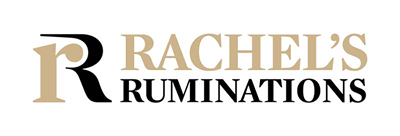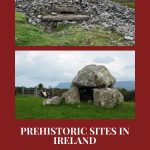After Brú na Bóinne: Prehistoric sites in Ireland
Do you enjoy visiting prehistoric sites, Iike I do? I like learning about what archeologists have figured out, and trying to imagine places as they once were. There are lots of prehistoric sites in Ireland, but the most well-known is Brú na Bóinne. When people visit Ireland, seeing Brú na Bóinne feels almost required, like seeing the Colosseum in Rome or the Eiffel Tower in Paris.
Yes, Brú na Bóinne is impressive and interesting, but there are other prehistoric sites in Ireland that you might want to see as well. (To be clear, I’m talking here about the Republic of Ireland, not Northern Ireland, which is part of the UK.) Conveniently, there’s a whole string of less well-known prehistoric sites dotted across the northern end of Ireland. It’s a great basis for a road trip after you visit Brú na Bóinne.
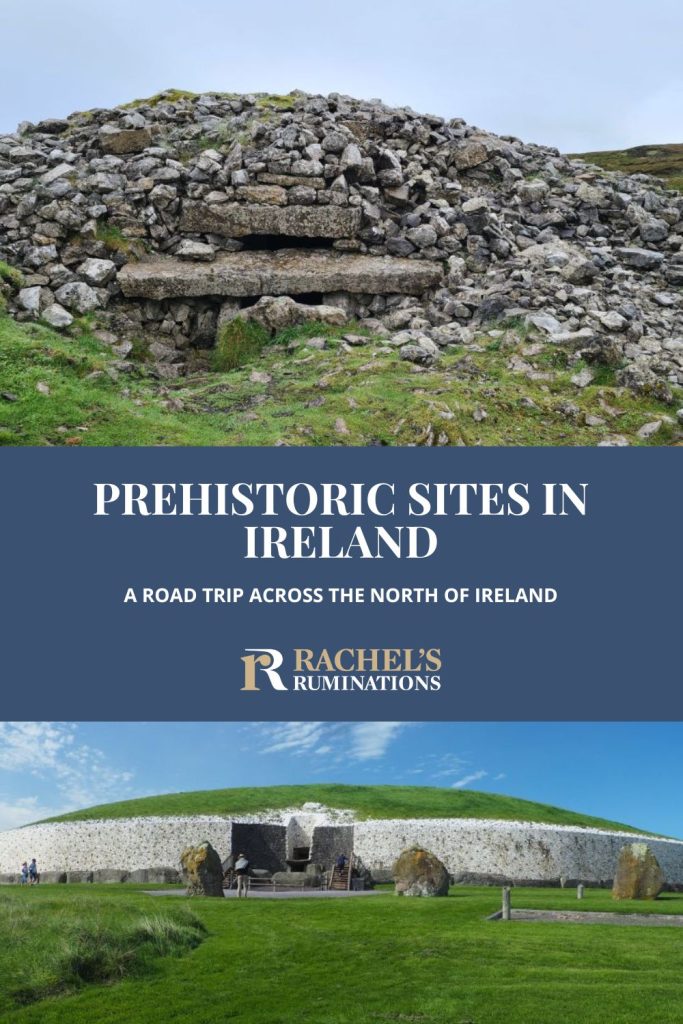
Disclosure: This article contains affiliate links. Making a purchase through an affiliate link will mean a small commission for this website. This will not affect your price.
My husband and I did this trip, continuing afterward on a circular route all the way around the country. It took us a month. We spent, I’d guess, about five days on the stops listed below, seeing a number of other sights along the way.
Compare rental car prices here.
What follows is a description of each of the locations, then my thoughts on which you should prioritize, as well as some practical information, a map showing all the locations, and recommendations.
A very brief history
Not much seems to be known about the people who built these prehistoric sites. There is evidence of some human habitation before the last ice age, but these sites are from well after that, dating to the Neolithic period after 4,500 BC. The people who built the sites grazed livestock and cultivated grain. They may have migrated from what is now England, or they may have come from France, where there are similar sites, particularly in Brittany.
These Neolithic people built stone structures: mostly tombs, but also ceremonial structures and defensive walls. They had some knowledge of astronomy, and aligned some of the monuments based on the solar year. They made tools of stone or bone, and decorative jewelry from shells. Quite a bit of pottery has been found at the funerary sites, but it may have only been used for burials rather than as everyday items.
1. Brú na Bóinne
This Neolithic site has three massive burial mounds dating to about 3,200 BC. They are what’s called passage tombs, meaning they have a central chamber with a long rock-lined passage leading to it from the outside. The chamber and passage are covered with many tons of rock and dirt, forming a round mound. The bases of the tombs are faced with large rocks carved with images like spirals and other geometric designs.
There are other Neolithic structures at the site – standing stones, for instance – but the mounds are so impressive that they take all the attention.
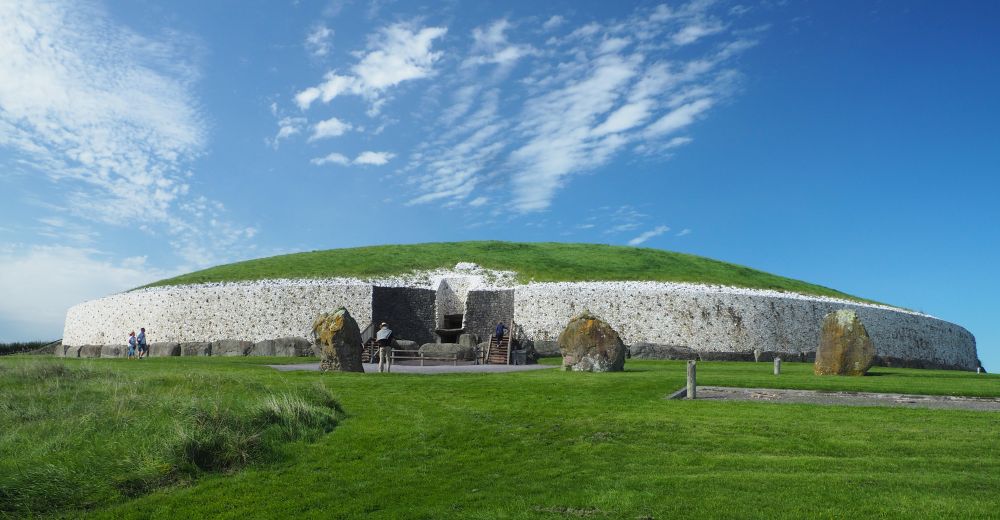
These tombs are huge, and when you consider they were built 5,000 years ago, they’re pretty awe-inspiring. At the same time, they’ve been heavily restored. They incorporate the original facing stones, for example, but the structures, changed to accommodate visitors, have an appearance that, to me, is almost too new.
We took a tour that allowed us to enter the tomb called Newgrange, and the tour guide explained all sorts of interesting things about how it was built, by whom, and the artwork carved into it. He also demonstrated how the light looks during the winter solstice, when the sun shines into a slit over the entrance (the “roof box”) in such a way that it reaches the very back of the chamber.
You cannot visit Brú na Bóinne on your own; you have to take one of the scheduled tours, and spaces on the tours are limited. Book a month ahead, since that’s when they open the tours for reservations. The main tour includes two mounds: Knowth and Newgrange, and it includes entering the chamber at Newgrange. A second tour is sometimes available that only includes Newgrange and its chamber. All tours include the Visitor Center, so make sure to allow time to take a look at the exhibits. The third mound, Dowth, is closed to the public.
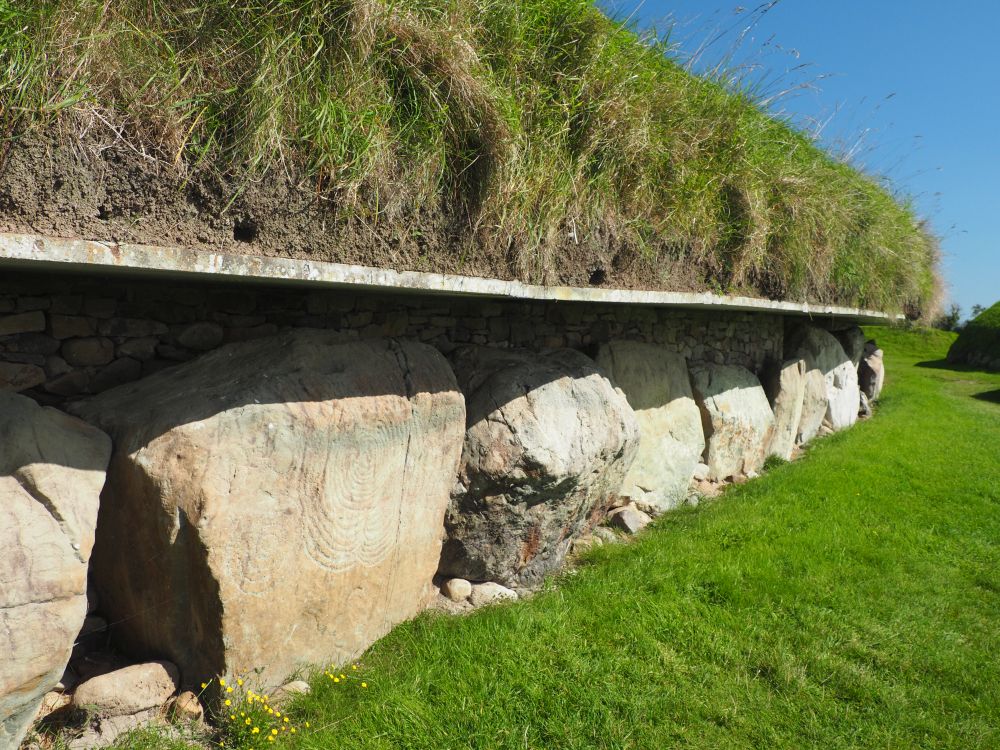
Wheelchair access is limited, but contact them ahead of time to arrange assistance. The chamber entrance is up a short flight of steps, and the tour includes a short bus (coach) ride from the Visitor Center to the mounds. Also, if you’re claustrophobic, you might not want to go into the chamber, but it’s okay to wait outside.
Brú na Bóinne: Donore, Drogheda, County Meath. Opening times vary from 9:00-16:15 in the depths of winter to 9:00-17:45 in the summer. Tour price: €18 for adults. Website.
Find accommodations near Brú na Bóinne.
2. Hill of Tara
Hill of Tara is a symbolically important site for the Irish: a place that combines history, mythology and a sense of Irish nationhood. It was considered the “seat of the high kings of Ireland” from the Iron Age and into the early Christian period. It includes about 25 different elements that archeologists know about, but there may be 50 more still underground.
Over the centuries it was used as a place for burials and ceremonies, but also for inaugurations of the Kings of Tara. The kingship of Tara was more of an honorary title than anything else. It didn’t include any defined territory, but it did confer a certain power and respect. Inauguration rituals at the Hill of Tara linked the Kings of Tara to the ancients.
Here are the most important parts of the site:
- The Mound of the Hostages: a passage tomb from about the same period as Brú na Bóinne. It’s the oldest burial place on the hill.
- Ráith na Ríg: an oblong enclosure around the top of the hill. In other words, it’s a ditch dug into the bedrock about three meters deep. It had, originally, a wooden wall along its inside. It would have offered protection to the shrines or ceremonial structures inside the wall. Today you can make out the ditch to some extent, but that’s it.
- The Forrad is a group of late prehistoric burial mounds, along with a ditch and two banks.
- Tech Cormaic: the remains of a medieval ring fort.
- Lia Fáil: you can’t miss this standing stone, probably a fertility symbol.
- The Sloping Trenches: an area of bumpy ground that was a burial mound and other barrows, or burial places. It dates to the Bronze and Iron Age.
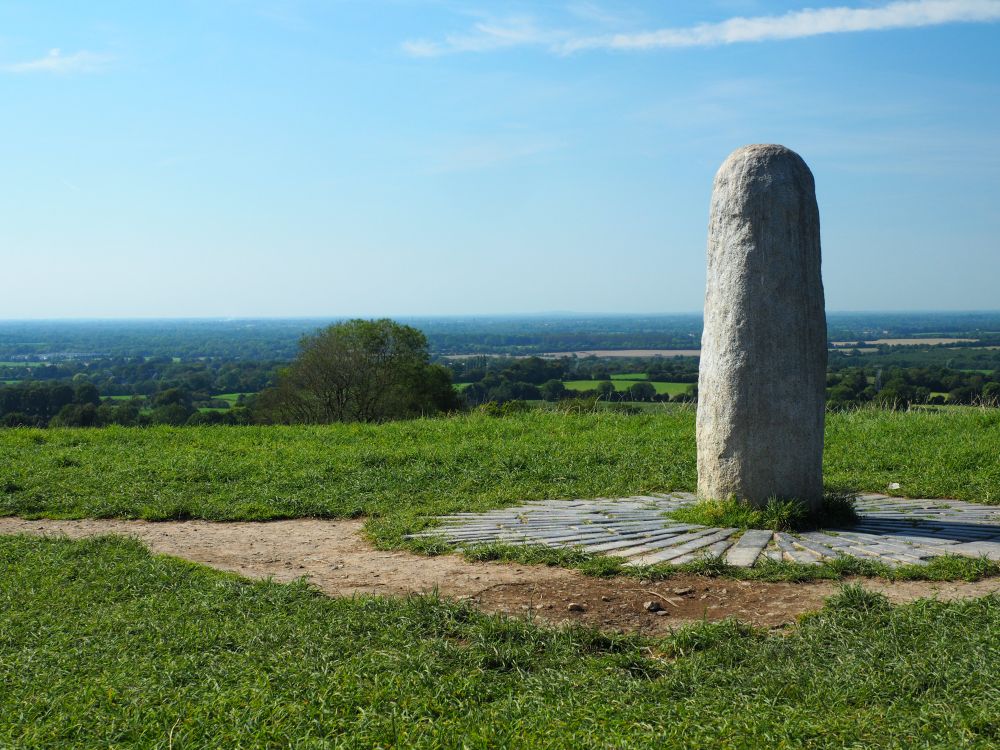
What you’ll mostly see here, in other words, is a well-mown area of grass on a hill, dotted with mounds and trenches. It’s worth a quick visit, however, because it’s a pretty and quiet area with a beautiful view and a charming little church nearby.
The ground and pathways are uneven and the site is not well accessible for wheelchair users.
Hill of Tara: Dunsany, Navan, County Meath. Open all year, daily 10:00-17:00 (but really open all the time). The Visitor Centre is open from early May to late September, daily 10:00-17:00. Admission: free. Website.
Find accommodations near Hill of Tara.
3. Loughcrew Cairns
Loughcrew is primarily a cemetery with a number of passage tombs on four hills in County Meath. These date to the same period as Brú na Bóinne. Some are intact or perhaps restored; I’m not sure. Others have pretty much just collapsed. Some of the stones that circle the base of the mounds or that line the x-shaped passages inside also show carvings: mostly concentric circles.
The ”best” passage tomb – called Cairn T – is one of the largest and still more or less intact, though originally it would have had a layer of white quartz covering the mound. Its central chamber is in the shape of a cross and has a corbelled roof of stones. Unfortunately it’s not open to the public, so you can only view the outside. You can, however, peer into the entrance, where you can see a few stones decorated with spiral carvings.
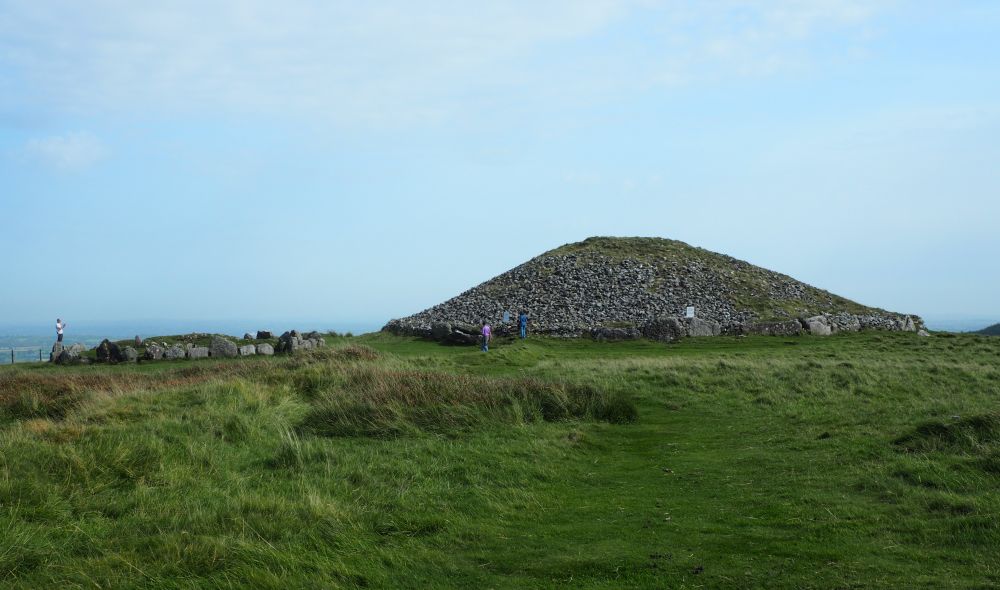
Cairn T is aligned so that the first rays of the sun shine into the entrance at the autumn equinox far enough to light the carved stone all the way at the back of the passage.
The walk up to Cairn T and the other cairns is steep, and it is not wheelchair accessible.
Loughcrew Cairns: Corsetown, Oldcastle, County Meath. Open daily in June, July and August 9:30-17:30, and guided tours are available from 10:30-15:30. Admission: free. Website.
Find accommodations near Loughcrew Cairns.
4. Rathcroghan
Rathcroghan is another “royal” site, much like the Hill of Tara, but in this case it was mostly a cemetery for the kings of Connaught. It has the remains of dozens of monuments, including ring forts, shrines, burial mounds and tombs. The only one that’s clearly visible is Rathcroghan Mound.
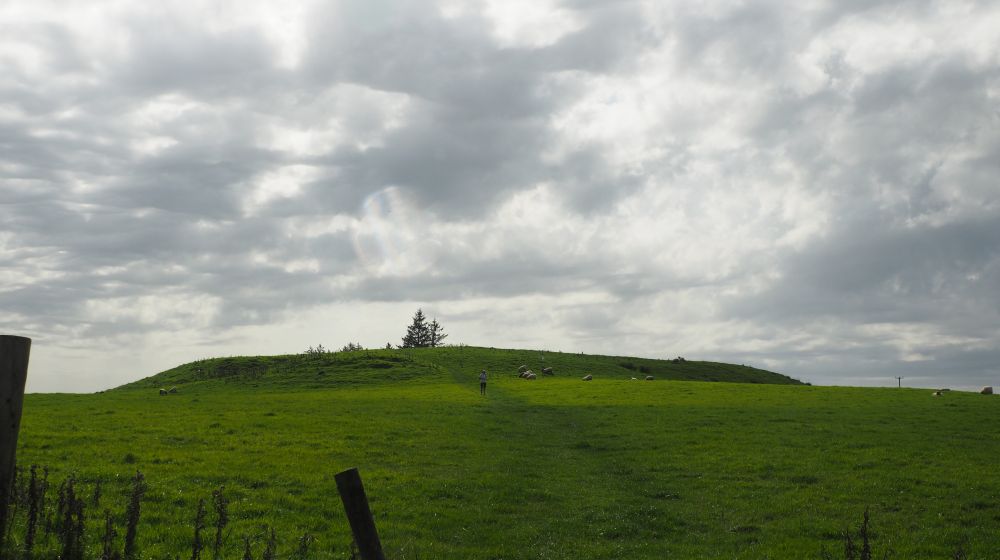
It’s a pretty underwhelming place. When we went in early September we only saw a couple of other people walking their dogs on the mound. The view, however, is pretty and green and dotted with sheep, who keep the grass well-mown. It’s not very accessible for wheelchairs, with uneven and unpaved paths.
On the other hand, the Rathcroghan Visitor Centre, not far away in the village of Tulsk, is a good place to get an idea of the history and archeology of this and other similar places. The center also offers guided tours of Rathcroghan.
Rathcroghan Visitor Centre: Tulsk, Castlerea, County Roscommon. Open Monday-Saturday 9:00-17:00. Guided tours September-April at 12:00; May-August at 12:00 and 14:00. Tours on Saturday are only by appointment. Exhibition tour: adults €6; Entrance to the site, plus the exhibition tour: adults €20. Website.
Find accommodations near Rathcroghan in Tulsk.
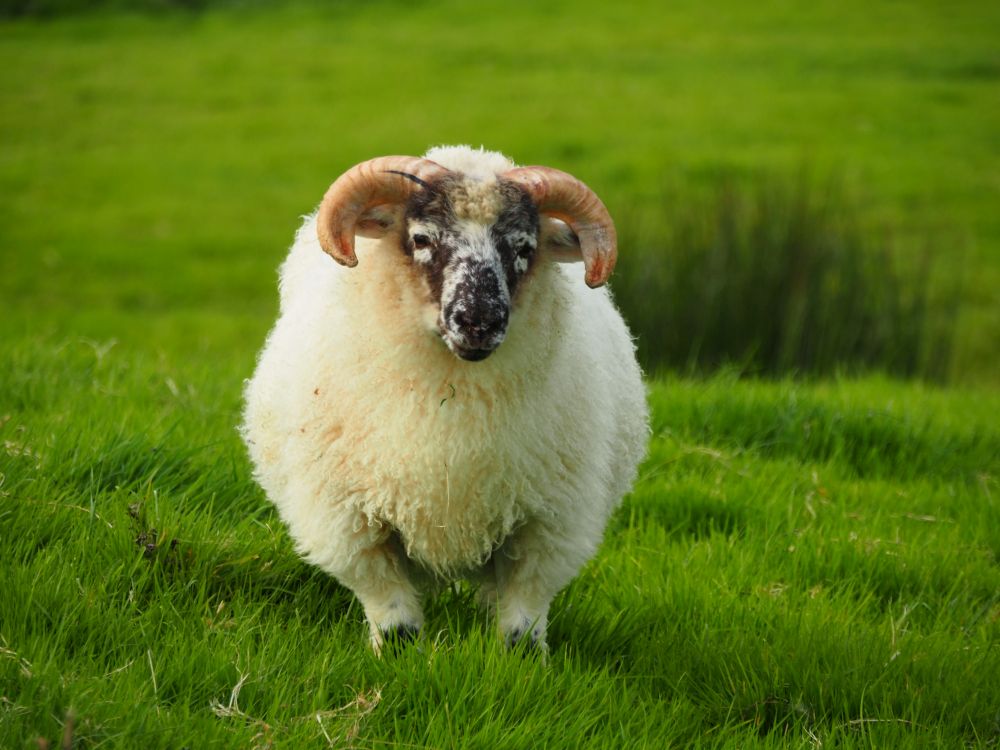
A group of sites connected in history and in legend to royalty in Ireland have applied for UNESCO status and are on UNESCO’s tentative list now. The proposed site is called “The Royal Sites of Ireland: Cashel, Dún Ailinne, Hill of Uisneach, Rathcroghan Complex, and Tara Complex.”
- Cashel: This is a medieval site, but is on the proposed site list because it was the seat of the Kings of Munster and their pre-Christian ancestors, the Chiefs of Munster. It’s down in County Tipperary in the south, and while it’s definitely worth visiting if you’re interested in medieval sites, it’s nowhere near this road trip route.
- Dún Ailinne: Seat of the Kings of Leinster. There’s not much of anything to see there, so I’ve left it off the list.
- Hill of Uisneach: According to the UNESCO website, this was “traditionally the epicenter (navel) of Ireland.” There’s not much to see here either except some trenches and barrows.
- Rathcroghan Complex and Tara Complex: I’ve included these two in my proposed route based on their location and their historical period.
5. Carrowkeel Passage Tombs
Carrowkeel is much different from all the places I’ve mentioned so far. It’s completely uncurated, meaning there’s no visitor center, no entrance location to speak of, and no staff. When I posted an Instagram story the day we visited, I said that it was the most off-the-beaten-path place we’d been, mostly because there didn’t even seem to be a path.
Carrowkeel is a cluster of 14 small passage tombs perched on a series of hills. Their age is about the same as Brú na Bóinne, about 5000 years old, and in remarkable condition given they haven’t been restored or rebuilt; just, to some extent, excavated. The tombs mostly held cremated remains and some Neolithic tools and pottery shards.
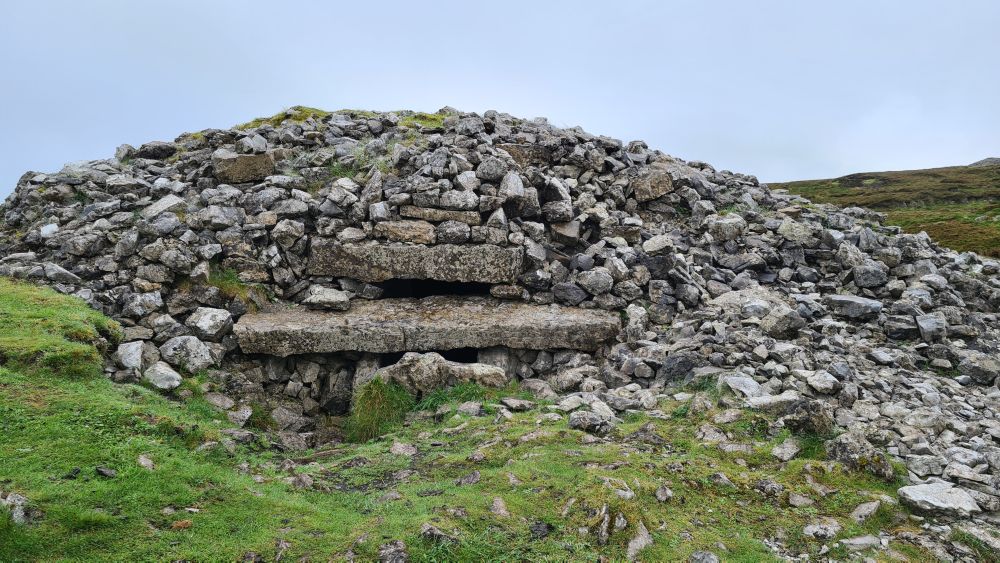
On the day we went it was very overcast and misty. That made it very atmospheric to be up there alone.
These are much simpler passage tombs than at Brú na Bóinne. They’re much smaller and the passages are only about a meter high (3 feet). I only went to two of them and saw no carvings, though there was one line on an entrance stone – which was leaning to the side – that I thought might be human-made.
From the one tomb we first climbed to, we could see several more. One was nearby on the same hilltop. The others were a bit higher on a separate hill, so my husband, Albert, hiked over there while I waited, taking in the stillness and the wind and the mist and thoroughly enjoying this feeling of separation from the world.
Anyway, on his return, he reported that the passage tomb he visited was more or less the same. There were no petroglyphs that he could see.
It took us a while to even find the road to Carrowkeel. We followed Google maps to a car park – really just a dirt clearing by the road. A sign with a rough map says: “You are approximately 1km from the Carrowkeel megalithic cemetery. The road to the cemetery is rough but traversable [sic] by car (not by coach). The road beyond the cemetery is too rough for a car.” We drove a little way on, though I wouldn’t recommend that in a rental car, parked to the side and just started walking up the hill.
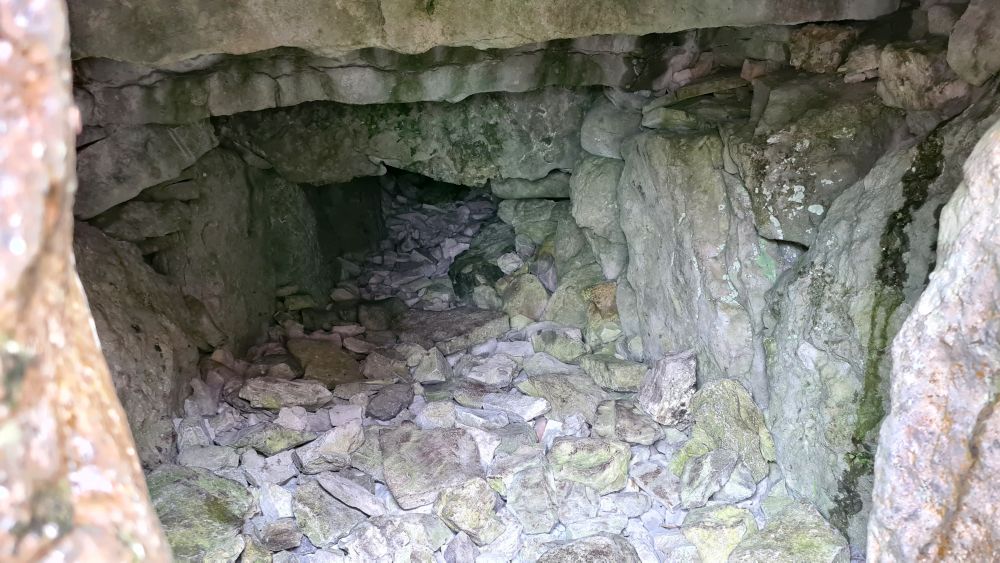
Please do not take anything or move anything at the site, and don’t climb on the cairns. Don’t crawl into any of the tombs either – they’re not reinforced and not in good shape, so a wrong move could mean collapse. You can see a lot just by sticking your arm in and using your camera’s flash.
Carrowkeel: In the Bricklieve hills, near the village of Castlebaldwin in County Sligo. Open all the time, but don’t go if it’s close to sunset. Admission: free. Website.
Find accommodations near Carrowkeel.
6. Carrowmore Megalithic Cemetery
Like Carrowkeel, Carrowmore is a large collection of 30 or so tombs; there were more, but the stones were taken for use elsewhere. They surround the largest cairn (passage tomb), called Listoghil, over an area of about a square kilometer.
This is the fourth of what are considered the four most important megalithic tomb sites in Ireland: Brú na Bóinne, Loughcrew, Carrowkeel and Carrowmore. It is the same age, more or less, as the others, but the tombs are different. Most are not cairns, i.e. they don’t have piles of rocks on them forming the typical mound you’ll see at the other sites.
Instead, they’re mostly more like dolmens: a kind of “passage grave” with two or more standing rocks that support a horizontal rock. The ones at Carrowmore have about five upright rocks supporting a cone or pyramid-shaped rock. Together the rocks form a roughly square or rectangular tomb space inside.
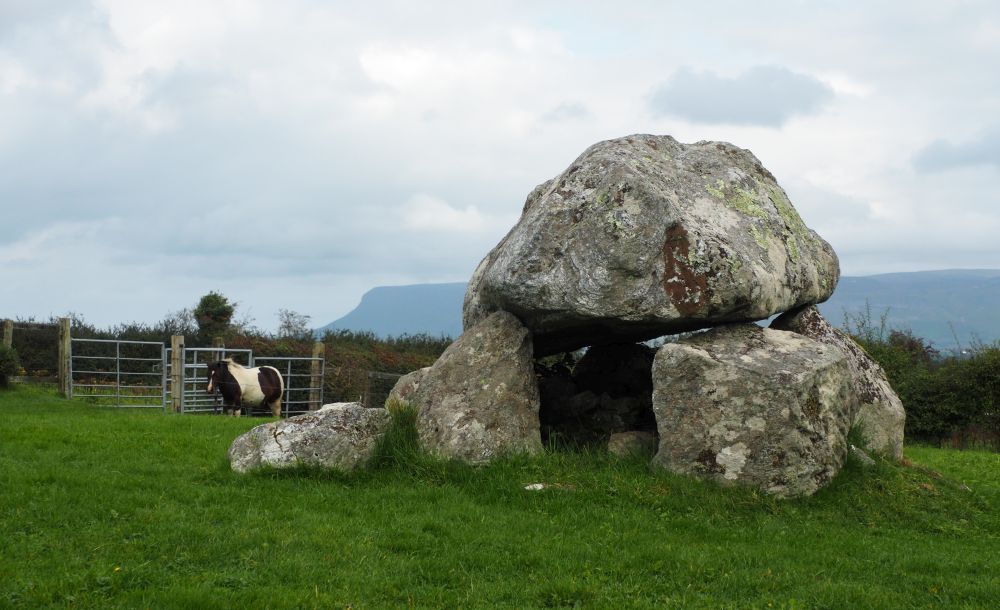
Enclosing each tomb is a larger circle of boulders, sometimes two concentric rings. And sometimes there’s a sort of “passage,” marked by boulders, that leads from the tomb to the boulder circle. Interestingly, all the tombs at Carrowmore are oriented toward the central tomb, Listoghil. This is one of the few here that was covered by a cairn. Today it’s got a new, reconstructed shell around it. Its tomb is the only one with a flat, table-like top.
Like at the other tomb clusters, the people buried here were mostly cremated, and besides human remains, archeologists have found tools, beads, bone pins and some pottery, which suggests they had settled in permanent communities as herders and/or farmers.
Access isn’t great for wheelchair users: the paths are just dirt or grass.
Carrowmore Megalithic Cemetery: Carrowmore, County Sligo. Reopening in July 2025 after some renovations of the visitor center. Before it closed, it was open daily 10:00-17:00. Check their website for updated information. Admission: €5 for adults. Website.
Find accommodations near Carrowmore.
7. Knocknarea and Queen Maeve’s Cairn
You can see Knocknarea Mountain from quite a few of the passage tombs in this area, especially from Carrowmore. In fact, it seems that some of the Carrowkeel tombs were intentionally oriented toward Knocknarea. At Carrowmore, you can’t miss the mountain or Maeve’s Cairn, which tops its highest point.
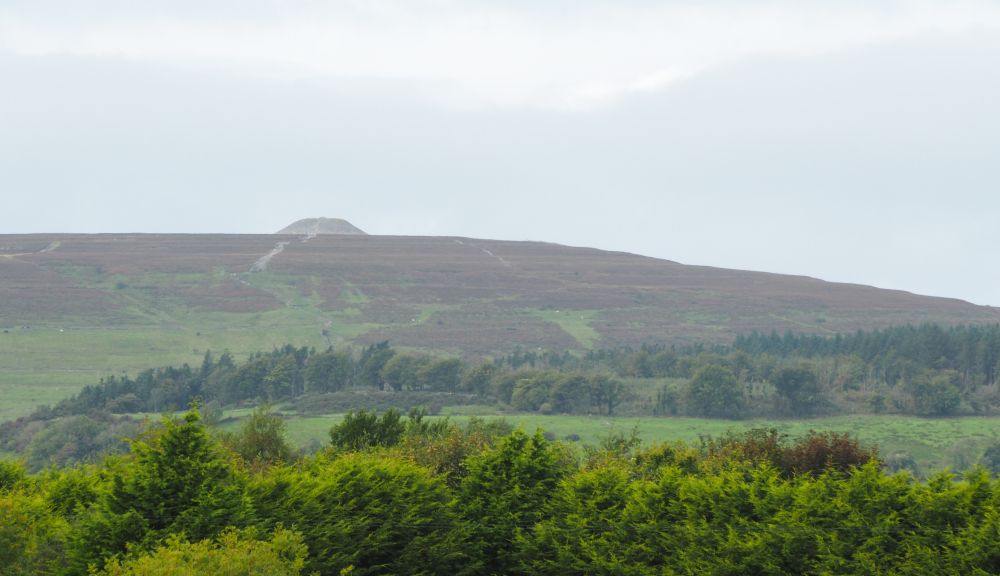
Not excavated yet, Maeve’s Cairn is probably also a passage tomb under a cairn, and at 10 meters high (33 feet) and 55 meters (180 feet) across, it’s larger than any of the others except those at Brú na Bóinne. It might have once been covered with white quartz rocks.
We only saw Queen Maeve’s Cairn from a distance. Getting to the top of the mountain to see it up close and to see the view will take some effort. This website details the two possible trails to get there. Do not climb on top of the cairn; it causes damage and is strictly prohibited!
Maeve’s Cairn: Knocknarea Mountain, County Sligo, reachable from Strandhill or Primrose Grange. Open all day every day. Admission: free.
Find accommodations near Strandhill.
Carrowmore, Carrowkeel and Maeve’s Cairn are part of another proposed UNESCO World Heritage site, “The Passage Tomb Landscape of County Sligo.” The site would include about 26 locations with about 100 passage tombs – many not yet excavated – across 16 square kilometers (6 square miles). It’s currently on UNESCO’s tentative list.
At this point in your road trip, you’ve reached the northwestern coast of Ireland. I’d suggest driving down the coast to one more interesting site: Céide Fields.
8. Céide Fields
This Neolithic site is what remains of some very old farm fields, with stone walls around their edges. According to Wikipedia, it’s not clear how old they are. They may date to about the same period as the various passage tombs listed here – from about 3500 BC – or they may date from something like 1000 BC. In other words, they’re either from the Neolithic period (Late Stone Age) or the later Bronze Age.
The walls edging the fields aren’t visible because over the centuries a peat bog has covered them. Excavations have traced where the walls are under the bog, and other elements of the community that lived here have been found: tombs and houses with walls around them. Apparently they cleared lots of forest to create pasture for grazing cattle, using the wood for firewood. They also used the cattle to pull ploughs to cultivate crops.
Today, it’s an isolated location on the coast, with a modern pyramid-shaped visitor center called Céide Fields Interpretative Centre. There you can learn about the people who lived here and how the excavation was done.
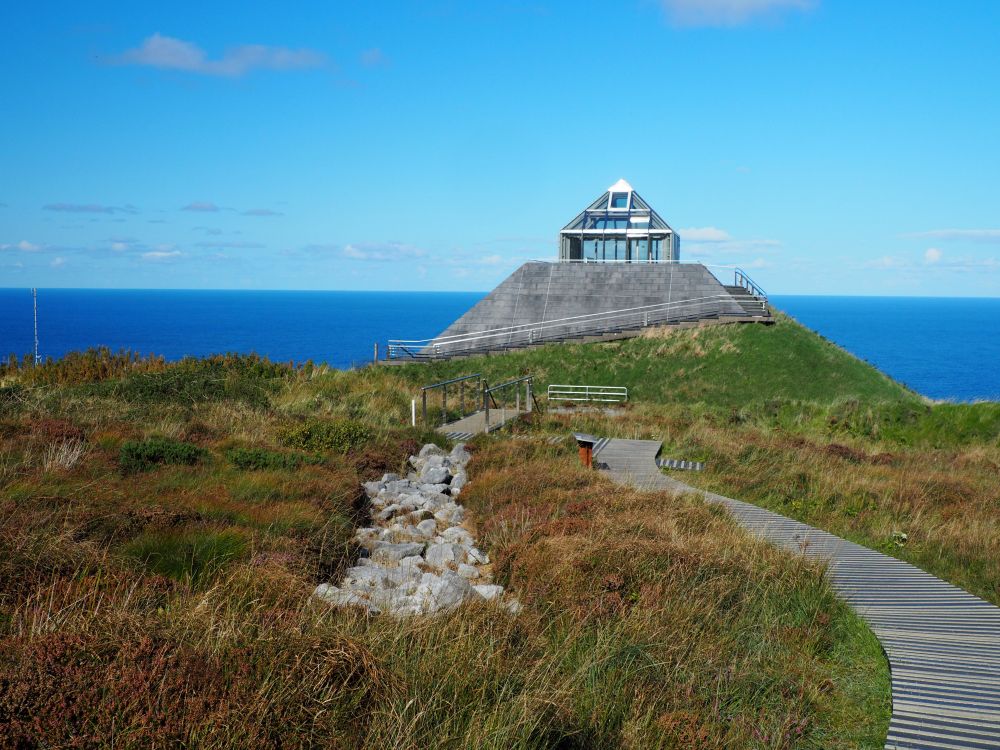
There’s almost nothing to see of the fields themselves or the structures that have been found. Neatly laid-out paths and boardwalks over the peat take you by a few of the ruins, but they’re really just a line of stones here, a circle of stones there. The reason to come here is to take in the visitor center and – the real highlight for us – the view up and down the coastline. It’s a raw and beautiful sight.
Céide Fields Interpretative Centre: Ballycastle, County Mayo. Open daily mid-March to early November. March-May and October 10:00-17:00; June-September 10:00-18:00. Admission: €5 for adults. Website.
Find accommodations near Céide Fields.
Which prehistoric sites in the northern counties are worth visiting?
If you only have time to visit one of these sites, it should be Brú na Bóinne. However, Brú na Bóinne doesn’t offer the raw sense of wonder that some of the others offer. What I mean by this is that the tours you are required to take are very polished and efficient, and the passage tombs have been thoroughly rebuilt, looking almost too neat. There is no opportunity, with so many people around, to take some time in the landscape.
It’s worth visiting, though, because it’s where you can see the best petroglyphs and actually enter a passage tomb. And the tour will give you the background you need to understand what you’re seeing at other sites.
The prehistoric site my husband and I liked best was Carrowkeel. Our enjoyment wasn’t so much about the prehistoric tombs themselves; it was about how it felt to be in that very isolated place. We had it absolutely to ourselves, and enjoyed the windy, misty quiet.
We liked Carrowmore as well, for pretty much the same reason, and for how impressive the view of Maeve’s Cairn is from there. If you have to choose only one of these two though, I’d recommend Carrowkeel over Carrowmore.
If your heritage is Irish, you should also visit the Hill of Tara. You’ll enjoy hearing the mythology surrounding it and the centrality of it in how the Irish view their history and heritage. Otherwise, I’d suggest skipping it.
Advice for your road trip in Ireland
A map of prehistoric sites in Ireland
First of all, take a look at the Google map below. I’ve marked all the prehistoric sites on this road trip with a purple star. The orange pointers show a few medieval-period sites that we also visited near this route, in case you want to add them to the trip.
- The Hill of Slane (ruins of a church or abbey) combines well with Brú na Bóinne.
- We saw Monasterboice (very early Medieval monastery ruins) and Old Mellifont Abbey on a different day, when we didn’t visit any prehistoric sites.
- We enjoyed seeing Trim Castle (a classic medieval castle) and Bective Abbey (a very atmospheric ruin) on the same day we visited the Hill of Tara.
- We combined Boyle Abbey (also a very atmospheric ruin) with Carrowkeel.
- Likewise, we saw Parke’s Castle (a picturesque little castle on a lakeshore) on the same day as Carrowmore.
- Round Tower (a very tall tower, once part of a monastic settlement) combined well with Céide Fields and a drive along the scenic coastline.
In addition, I’ve added a few pointers in green, which are prehistoric sites in other parts of the Republic of Ireland that we visited. (Note that this is not comprehensive. There are many other prehistoric sites in Ireland, and you’ll probably spot more cairns on hills as you drive. But these are the ones that I feel might be worth visiting.) If you have the time, I would certainly recommend at least two destinations:
- Take the ferry to the island of Inishmore to see Dun Aonghasa, a prehistoric fort on the edge of a cliff.
- Visit at least one of the stone forts: Cahergall, Leacanabuaile (quite near each other) or Staigue.
Driving on the left
I’m going on the assumption that you’ll rent a car on arrival in Ireland, presumably at Dublin airport, and head north to start the tour at Brú na Bóinne. That’s a good place to start, since the airport is north of the city. You can avoid city driving as you arrive and wait to explore Dublin at the end of your trip.
If you’re not from a left-hand-driving part of the world, don’t worry! It’s really not hard to make the switch. Remind yourself each time you get into the car that you need to keep left. Since you’ll be driving on a side of the car you’re not used to, that’s probably enough to give you that reminder.
I’ve found that when there are other cars around, it’s easy enough to just do what they do, i.e. follow them on the left. The times I’ve slipped have been when I wanted to get back on the road from a parking space in a place where there were no other cars in sight. My instinct is to steer to the right, so that’s what I did. If it helps, make a small sign for yourself that says “Keep left!” and put it on the steering wheel or the dashboard where you’re sure to see it.
The roads in Ireland
The roads are well-paved and well-signposted. However, on this road trip there are no real highways. (Actually, I don’t recall driving any real highways in our entire road trip all around the country.) As you drive, you’ll see a rural landscape of wonderfully green rolling hills.
The roads can get quite narrow. Sometimes they’re not even wide enough for two-way traffic. Take it slow, especially on the curves, and notice the pull-outs here and there along the road. These aren’t parking places; they’re places for when a car is coming the other way and it’s too narrow to pass. If you see a car approaching, look for a pull-out and move over into it. Chances are the other person will too, so you’ll have to use hand gestures to decide who’s going first.
Especially along the coastal roads, the views can be gorgeous, but the road can be very curvy. Please pull over to look and avoid sightseeing while you drive.
Other tips
Take a look at my article about tower houses in Ireland as you make your plans for a road trip. I loved visiting them, and you might want to add some of them to your itinerary too.
The days around the winter solstice are special at Brú na Bóinne. A lottery is held each year in September to choose who can go into the chamber at Newgrange passage tomb on the few mornings when the sun shines in through the “roof box.” If you happen to be planning a December trip, you might as well enter the lottery, though your odds would be very low. Lots of people go anyway to watch the sunrise outside the tomb.
In the box below, you’ll see my recommendations for various travel products, including WifiCandy’s portable wifi modem. WifiCandy is based in Ireland, which makes this portable modem particularly easy to use there. You reserve one and pick it up at the Dublin airport, then return it there when you leave again.
And speaking of driving and internet, we brought one of those little clips that allows you to hang your phone from the air-conditioner vent in the car. Then we just used a Google map I’d made, much like the one above but with far more sites marked on it. Whenever we set out to see the next sight on our one-month road trip, it was as easy as touching that marker and choosing “directions” and it would take us there. You could do the same with the map above and not pay extra for GPS in your rental car.
Have you visited any prehistoric sites in Ireland? If so, add any additional advice in the comments below. Or if you have questions for a planned trip, ask away!
My travel recommendations
Planning travel
- Skyscanner is where I always start my flight searches.
- Booking.com is the company I use most for finding accommodations. If you prefer, Expedia offers more or less the same.
- Discover Cars offers an easy way to compare prices from all of the major car-rental companies in one place.
- Use Viator or GetYourGuide to find walking tours, day tours, airport pickups, city cards, tickets and whatever else you need at your destination.
- Bookmundi is great when you’re looking for a longer tour of a few days to a few weeks, private or with a group, pretty much anywhere in the world. Lots of different tour companies list their tours here, so you can comparison shop.
- GetTransfer is the place to book your airport-to-hotel transfers (and vice-versa). It’s so reassuring to have this all set up and paid for ahead of time, rather than having to make decisions after a long, tiring flight!
- Buy a GoCity Pass when you’re planning to do a lot of sightseeing on a city trip. It can save you a lot on admissions to museums and other attractions in big cities like New York and Amsterdam.
- Ferryhopper is a convenient way to book ferries ahead of time. They cover ferry bookings in 33 different countries at last count.
Other travel-related items
- It’s really awkward to have to rely on WIFI when you travel overseas. I’ve tried several e-sim cards, and GigSky’s e-sim was the one that was easiest to activate and use. You buy it through their app and activate it when you need it. Use the code RACHEL10 to get a 10% discount!
- Another option I just recently tried for the first time is a portable wifi modem by WifiCandy. It supports up to 8 devices and you just carry it along in your pocket or bag! If you’re traveling with a family or group, it might end up cheaper to use than an e-sim. Use the code RACHELSRUMINATIONS for a 10% discount.
- I’m a fan of SCOTTeVEST’s jackets and vests because when I wear one, I don’t have to carry a handbag. I feel like all my stuff is safer when I travel because it’s in inside pockets close to my body.
- I use ExpressVPN on my phone and laptop when I travel. It keeps me safe from hackers when I use public or hotel wifi.
